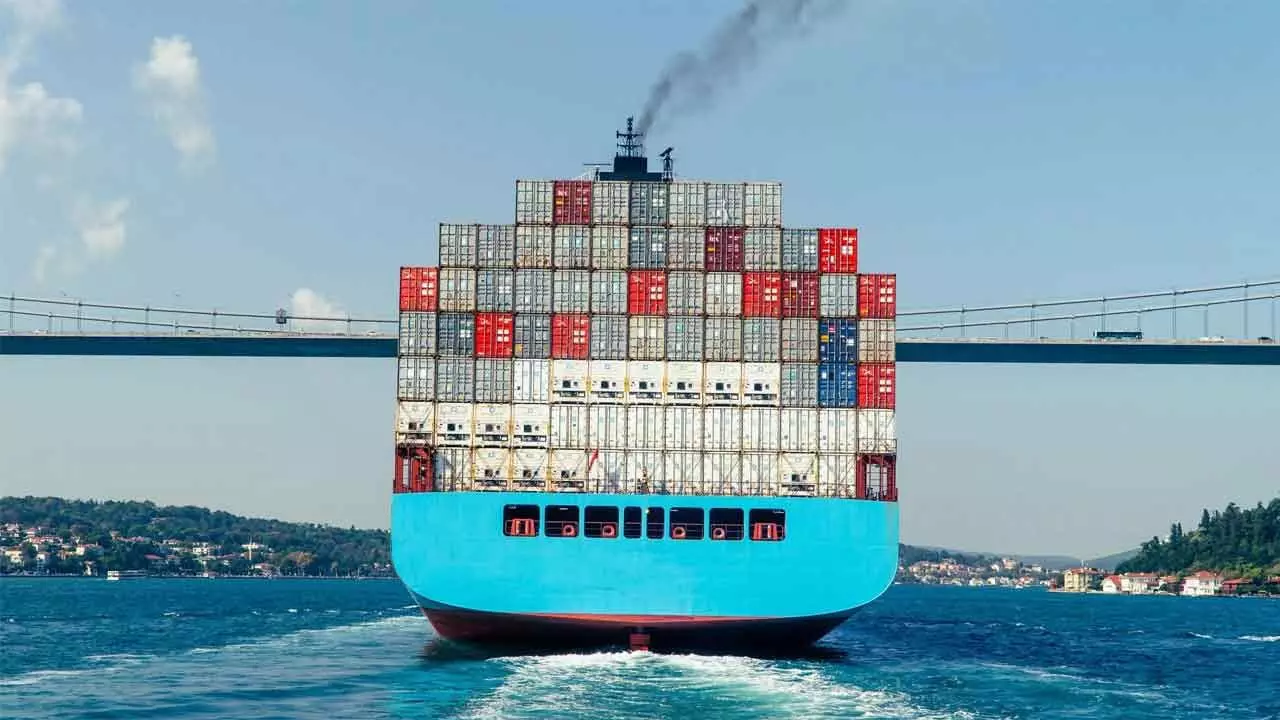Shipping Charts New Course With Historic Net-Zero Deal
From cleaner fuels and new technologies to safety training and equitable support for developing nations, the voyage ahead will test both resolve and innovation
Shipping Charts New Course With Historic Net-Zero Deal

IMO’s net-zero framework marks a turning point for one of the world’s most vital yet least-regulated industries. With binding targets, financial tools,and global cooperation at its core, the agreement signals a rare win for multilateral climate action
Every day, tens of thousands of massive ships navigate the globe’s oceans, ferrying grain, electronics, vehicles, clothing, and countless other goods. Nearly 90 per cent of global cargo moves this way, making international shipping a cornerstone of the world economy. But the sector also contributes nearly three per cent of global greenhouse gas emissions, fuelling climate change—and, until recently, evading serious scrutiny.
That changed in April 2025 when the International Maritime Organization (IMO), the United Nations agency that regulates global shipping, adopted a landmark strategy to make the industry net-zero by around mid-century.
“This demonstrates that multilateralism and the United Nations are still relevant and important in these particular times,” said Arsenio Dominguez, Secretary-General of the IMO, in an interview. He described the tense negotiations during the 83rd session of the Marine Environment Protection Committee as “emotional and historic,” crediting the breakthrough to the collective will of both large shipping nations and small island states vulnerable to rising sea levels.
A long voyage toward regulation
The approval of the IMO Net-Zero Framework caps more than a decade of painstaking negotiations. The IMO began addressing emissions in 2011 with the first mandatory energy-efficiency measures for ships. In 2018, it adopted the Initial IMO Strategy on Reduction of GHG Emissions from Ships, setting the first global climate targets for the industry.
By 2023, the momentum had grown. Member states agreed to cut emissions by at least 20 per cent by 2030 and 70 per cent by 2040, with the long-term goal of transitioning to zero or near-zero emission fuels. The 2025 agreement now transforms those ambitions into binding regulation.
“We’re focusing first on 2030,” Dominguez said. “Meeting those goals and achieving at least a five per cent uptake of alternative fuels will pave the way for the next steps.”
Redesigning the machinery of commerce
In 2023, global maritime trade exceeded 12 billion tonnes of cargo. Nearly every product in everyday life—from smartphones to sofas—relies on the shipping industry. “Even the chair you’re sitting on was likely transported by ship,” Dominguez noted. “Shipping is the most efficient mode of mass transportation, but it comes with responsibility.”
Under the new framework, two central tools will drive change: a global fuel standard and a market-based pricing mechanism. The fuel standard will reduce the greenhouse gas intensity of fuels, while the pricing mechanism will require polluting ships to either purchase ‘remedial units’ or offset their emissions through contributions to the IMO Net-Zero Fund.
Ships that exceed emissions limits can offset their footprint by buying credits from more efficient vessels or funding decarbonisation projects. The revenues will reward low-emission shipping, support technology transfer, and help developing nations access cleaner fuels.
“We work closely with member states, especially small island and least developed countries, to help implement IMO rules,” Dominguez said. Certification, audits, and regular reporting will ensure accountability.
Balancing climate and commerce
The new rules will apply to large ocean-going vessels over 5,000 gross tonnes—responsible for about 85 per cent of shipping emissions. Addressing concerns about rising costs and potential supply chain impacts, especially for import-dependent countries, Dominguez acknowledged trade-offs but emphasised the long view.
“There is a cost to decarbonizing, just as there’s been a cost to polluting,” he said. “We’ve assessed the potential impact and designed financial measures to ease the transition.”
Innovation will be critical. Emerging technologies include ammonia and hydrogen fuels, wind propulsion, solar-assisted shipping, and onboard carbon capture. Dominguez noted, “We’re rediscovering wind as a power source in shipping. Our rules are meant to encourage—not stifle—innovation.”
But new technologies also bring new risks, particularly for seafarers. “Training and safety are paramount,” he added. “This transition must include people.”
A roadmap to zero
The framework sets a clear timeline: reduce emissions by at least 20 per cent (striving for 30 per cent) by 2030, at least 70 per cent (striving for 80 per cent) by 2040, and reach net-zero by around 2050. Compliance will begin in 2028.
“This is a progressive approach,” said Dominguez. “It’s not about waiting until 2050. We’ll constantly review and refine our strategy based on experience, data, and feedback.”
Beyond carbon
While greenhouse gases are the focus, the IMO also addresses other maritime environmental issues. “Shipping affects many parts of the environment,” Dominguez explained. “From biofouling and underwater noise to ballast water management, we have to consider it all.”
Biofouling—organisms like barnacles on ship hulls—increases fuel use. Underwater noise can disrupt marine life. Ballast water, used to stabilize ships, can introduce invasive species across continents. All are areas where the IMO is actively working.
The path forward
Looking ahead to the IMO’s extraordinary session in October, Dominguez is optimistic. “We’ve already shown that multilateralism works,” he said. “The next step is building out implementation guidelines, especially for the pricing system. By the time the amendments come into force in 2027, we want to demonstrate real progress.” For Dominguez, the agreement is more than a regulatory milestone—it’s a global commitment to a cleaner, fairer future. “It’s not a question of if we get it right. We are getting it right,” he said. “This is the beginning of a transition. And we’ve just taken the first step.”
(news.un.org)

